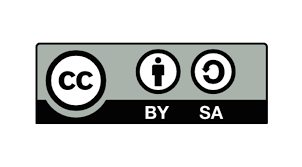Semantic Frames of the Urdu Conjunct Verb lagnā: A Corpus-based Study
Keywords:
Cognitive linguistics, corpus-based, frame semantics, lexico-grammatical study, Urdu polysemous verbsAbstract
In this corpus-based study, we present semantic frames based on principles of FrameNet[1] of Urdu conjunct verb lagnā. In research studies on Urdu, while translating from Urdu to English or for grammatical analysis, lagnā is typically translated in English as ‘attach’ creating a perception that this is its prototypical meaning. However, Online Urdu Dictionary[2] (OUD) shows at least seven different senses in natural language. The sources for the theoretical framework of the study include frame semantics (Fillmore & Atkins, 1992), and polysemic meaning (Traugott & Dasher, 2002). This situates the study in the cognitive linguistic framework. The analysis examples are extracted from 95.4 million words Urdu monolingual corpus (Jawaid et al., 2014) which can now be accessed using CQPweb[3]. The frequency of occurrence of types of lagnā and observation of concordance lines of extracted examples helps in analysing to what extent the different patterns in which the verb lagnā generates different meanings. The preliminary analysis showed that there are two overarching patterns NOUN+ lagnā and VERB + lagnā. Within these two patterns, we observed and analysed twelve semantic frames, of which BEGIN is the most frequent frame followed by TOUCH with the second-highest frequency. This analysis also helps in understanding that certain verbs in Urdu also have polysemous use and their meanings are context-dependent that can be established through a corpus-based analysis. This analysis and its findings are especially beneficial for the Urdu language scholars who have an interest in translation studies or (descriptive) grammatical analysis to look for different interpretations as well as integrate semantic frame and corpus methods rather than relying on restrictive meaning of this verb (as well as other polysemous verbs) for data analysis.
[1] https://framenet.icsi.berkeley.edu/fndrupal/
[2] http://202.142.159.36:8081/oud/default.aspx
[3] https://cqpweb.lancs.ac.uk/urmono/
In this corpus-based study, we present semantic frames based on principles of FrameNet[1] of Urdu conjunct verb lagnā. In research studies on Urdu, while translating from Urdu to English or for grammatical analysis, lagnā is typically translated in English as ‘attach’ creating a perception that this is its prototypical meaning. However, Online Urdu Dictionary[2] (OUD) shows at least seven different senses in natural language. The sources for the theoretical framework of the study include frame semantics (Fillmore & Atkins, 1992), and polysemic meaning (Traugott & Dasher, 2002). This situates the study in the cognitive linguistic framework. The analysis examples are extracted from 95.4 million words Urdu monolingual corpus (Jawaid et al., 2014) which can now be accessed using CQPweb[3]. The frequency of occurrence of types of lagnā and observation of concordance lines of extracted examples helps in analysing to what extent the different patterns in which the verb lagnā generates different meanings. The preliminary analysis showed that there are two overarching patterns NOUN+ lagnā and VERB + lagnā. Within these two patterns, we observed and analysed twelve semantic frames, of which BEGIN is the most frequent frame followed by TOUCH with the second-highest frequency. This analysis also helps in understanding that certain verbs in Urdu also have polysemous use and their meanings are context-dependent that can be established through a corpus-based analysis. This analysis and its findings are especially beneficial for the Urdu language scholars who have an interest in translation studies or (descriptive) grammatical analysis to look for different interpretations as well as integrate semantic frame and corpus methods rather than relying on restrictive meaning of this verb (as well as other polysemous verbs) for data analysis.



